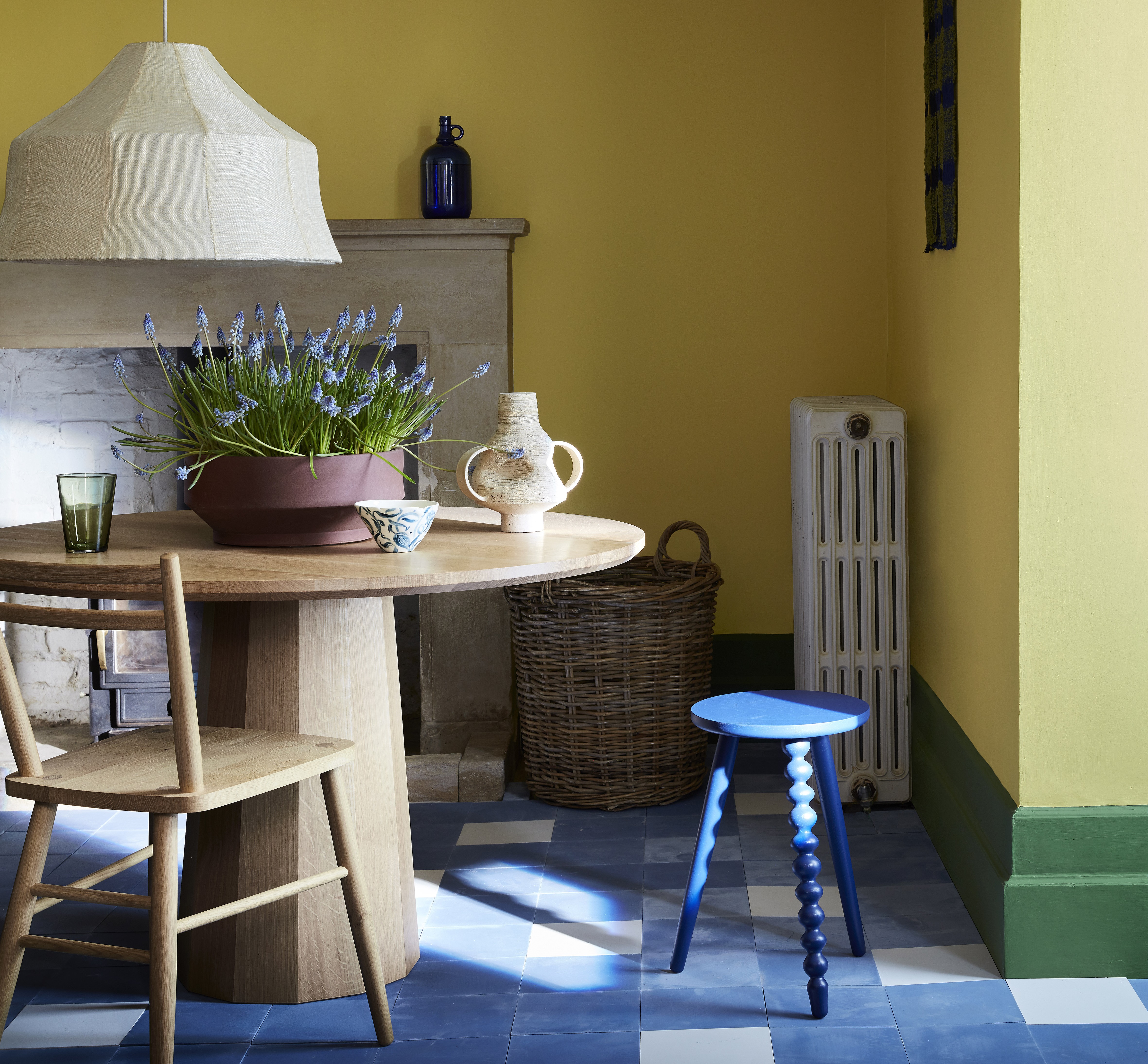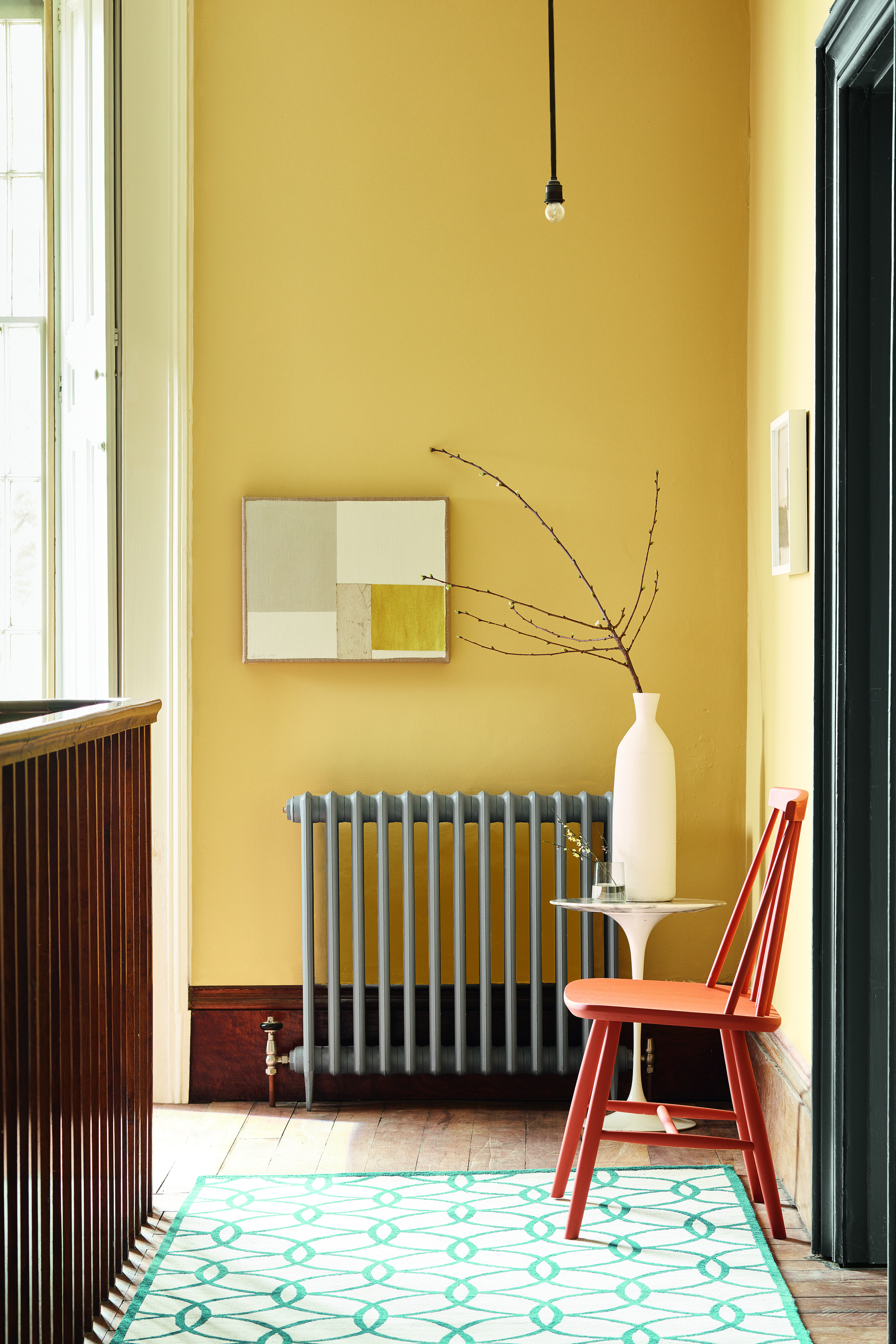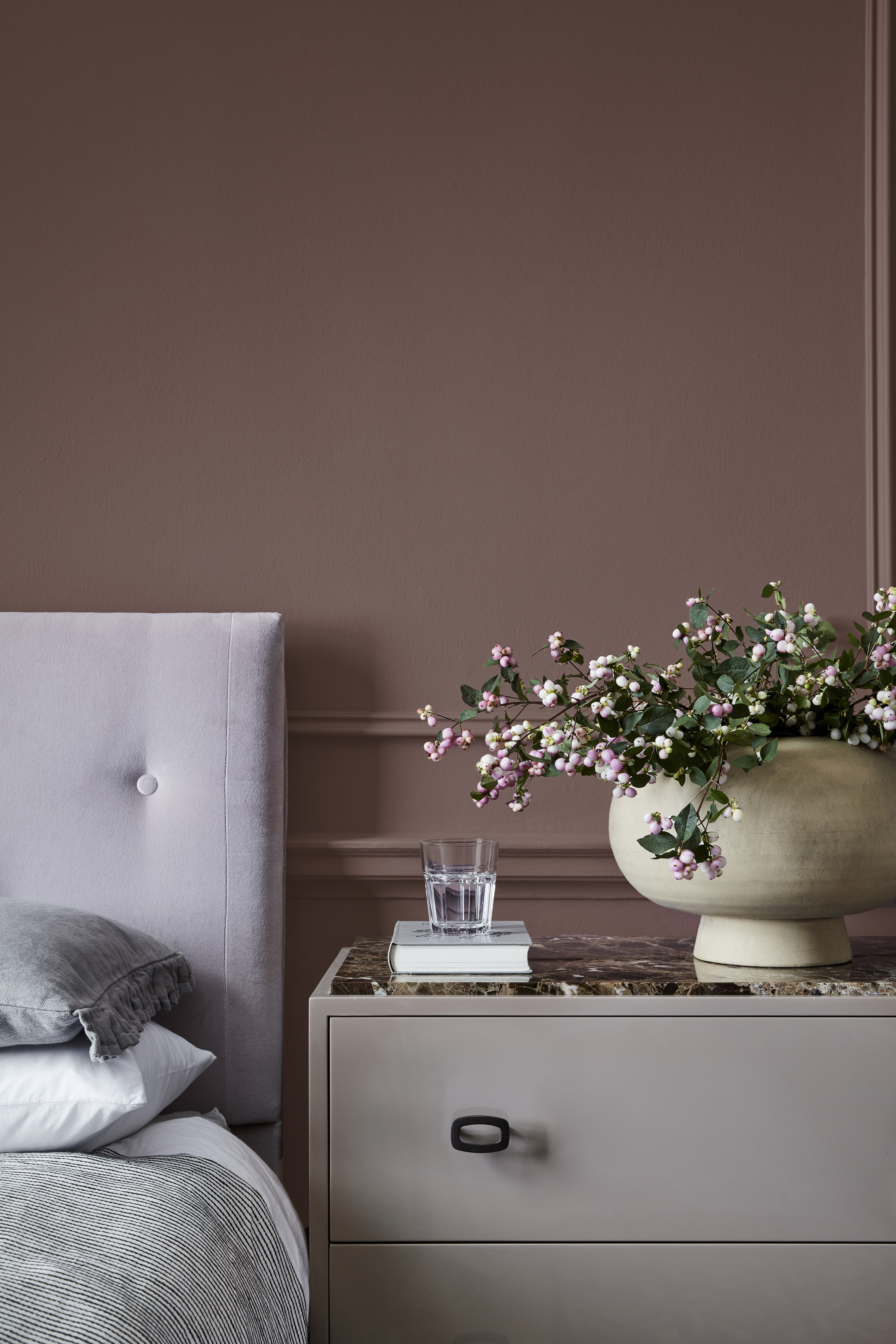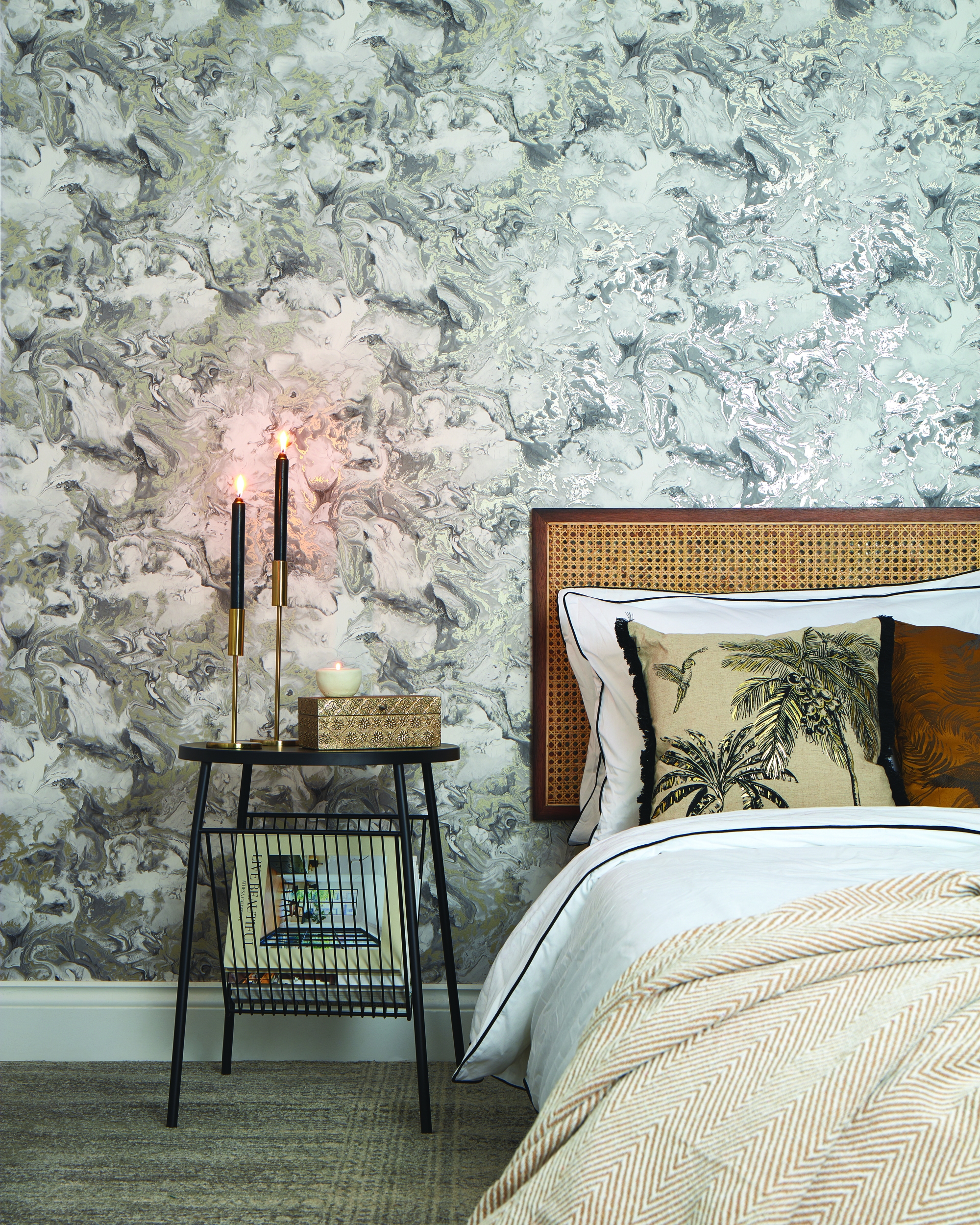Is it too hot to decorate? Don't paint or wallpaper over this temperature, say experts
Can it actually be too hot to decorate? We've asked a team of experts the ideal temperatures for painting and wallpapering your home to achieve the perfect finish


It's hard to complete every day tasks in extreme heat, and decorating your home is no exception. Summer 2022 has seen recording-breaking temperatures across the globe and although it might be the perfect conditions for your summer vacation, the heat can be pretty disruptive. As a result, when it comes to carrying out our decorating ideas, many of us are wondering if it's too hot to paint or wallpaper our homes.
Alongside the physical exhaustion that's likely to result from reaching a roller way above your head at high temperatures, there are some practical issues to consider when it comes to painting or hanging wallpaper in the heat. The temperature is a huge factor in helping your paint or wallpaper paste to dry, and while you might think the hotter the temperature is the quicker your decorating job will dry, hot weather can actually damage the job. Consequently, you won't be able to achieve the smooth, clean finish on your walls that you otherwise could.
But how hot is too hot? We've asked some paint and wallpaper specialists for their advice on decorating in the heat and which temperatures we should all be avoiding (meaning you don't have to feel guilty about spending another day on the sun lounger).

What happens if you paint when it's too hot?
Regardless of whether you're using a water or oil-based paint, the solvent or water within it will need to evaporate in order for your paint to dry. This is intended to be a gradual process so although wondering how long paint takes to dry can be tedious, it's not going to benefit your paint job if it dries to quickly. And there's nothing worse than spending time, money and effort on painting your home only to be left with a messy and unsightly job at the end of it.
But how does the heat affect paint? When paint dries too quickly due to the solvents evaporating rapidly, it won't bind properly to the surface. Ultimately, this can lead to cracks, peeling, or uneven finishes on you walls, floors or ceiling. The heat won't help with the application of paint either. 'Painting in direct sunlight can make paint more difficult to apply and cause cracking and brush marks,' explains Ruth Mottershead, creative director at Little Greene.
What temperature is too hot to paint inside your home?

There's no simple answer to the question of what temperature it's too hot to paint in. It will depend on a range of factors including the type of paint you're using, the humidity in your environment, and the surface you're painting on. However, as a general rule, it's best to avoid painting when the weather outside is 77 degrees Fahrenheit or above.
While your walls themselves won't be this hot, these high temperatures will cause the surface of your walls to be warmer than usual. And, as Ruth notes, 'When completing an interior decorating project during the hot summer months, you should ensure that the temperature of the item you are painting is below 77 degrees Farenheit.'
Be The First To Know
The Livingetc newsletters are your inside source for what’s shaping interiors now - and what’s next. Discover trend forecasts, smart style ideas, and curated shopping inspiration that brings design to life. Subscribe today and stay ahead of the curve.
'You should also avoid painting surfaces that are in direct sunlight as this will affect the way that the paint dries,' she adds. If you can't avoid painting on a hot sunny day, it's best to paint early in the morning or late in the evening to avoid direct sunlight and the hottest part of the day. It's a good idea to follow the shade around your home, too. If your kitchen faces east and receives lots of morning sun, paint it in the evening, and vice versa.
What happens if you hang wallpaper when it's too hot?

Whether your wallpaper idea is for an entire wall, a small segment or even a ceiling, decorating with wallpaper is a similar story to painting in the heat. When hanging wallpaper in hot temperatures, the adhesive used to apply the strips to the walls can dry up too fast, causing several problems to possibly occur.
'When adhesive dries too quickly in excessive heat, it can cause the edges of the strips to curl, bubbles to form, or the strips of wallpaper to even shrink,' says Chelsea Clark, head of brands at I Love Wallpaper.
It can be argued that a messy wallpaper job is even worse than a bad paint job - no matter how hard you try, there's no disguising shrunken or bubbled wallpaper. Thankfully, Chelsea has some advice if you're left with no option but to hang wallpaper in hot weather. 'Ensure the room your wallpapering is well ventilated and try to avoid the hottest periods of the day when hanging,' she says.
'You can also keep the room cool by closing blinds or curtains and keeping windows shut,' adds James Greenwood, brand and interior expert at Graham & Brown wallpapers. 'If its still too hot after this, then try adding a little extra paste to the walls to account for the quicker drying time.'
What temperature is too hot to hang wallpaper?
Again, it's difficult to pin down a precise temperature at the point at which it becomes too hot to hang wallpaper as different types of wallpaper can have different weightings. James does offer some professional insight into how to hang wallpaper in heat, though.
'We recommend that wallpaper should only be put up if the temperature is below 86 Fahrenheit as the wallpaper can curl and glue can dry too quickly in temperatures hotter than this,' he explains. 'You will also most likely find the job more tiresome in this heat, so it is best to wait until it is cooler.'
With all that in mind, if you have any doubts about whether it's too hot to decorate, the safest bet is to avoid painting or wallpapering entirely. Our advice? Save yourself the added stress and any costly mishaps by decorating in spring and autumn instead.

Lilith Hudson is a freelance writer and regular contributor to Livingetc. She holds an MA in Magazine Journalism from City, University of London, and has written for various titles including Homes & Gardens, House Beautiful, Advnture, the Saturday Times Magazine, Evening Standard, DJ Mag, Metro, and The Simple Things Magazine.
Prior to going freelance, Lilith was the News and Trends Editor at Livingetc. It was a role that helped her develop a keen eye for spotting all the latest micro-trends, interior hacks, and viral decor must-haves you need in your home. With a constant ear to the ground on the design scene, she's ahead of the curve when it comes to the latest color that's sweeping interiors or the hot new style to decorate our homes.
-
 Turns Out the Coolest New Café is Actually In Your Kitchen — Here's How to Steal the Style of TikTok's Latest Trend
Turns Out the Coolest New Café is Actually In Your Kitchen — Here's How to Steal the Style of TikTok's Latest TrendGoodbye, over-priced lattes. Hello, home-brewed coffee with friends. TikTok's 'Home Cafe' trend brings stylish cafe culture into the comfort of your own home
By Devin Toolen Published
-
 5 Bathroom Layouts That Look Dated in 2025 — Plus the Alternatives Designers Use Instead for a More Contemporary Space
5 Bathroom Layouts That Look Dated in 2025 — Plus the Alternatives Designers Use Instead for a More Contemporary SpaceFor a bathroom that feels in line with the times, avoid these layouts and be more intentional with the placement and positioning of your features and fixtures
By Lilith Hudson Published